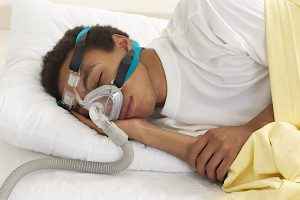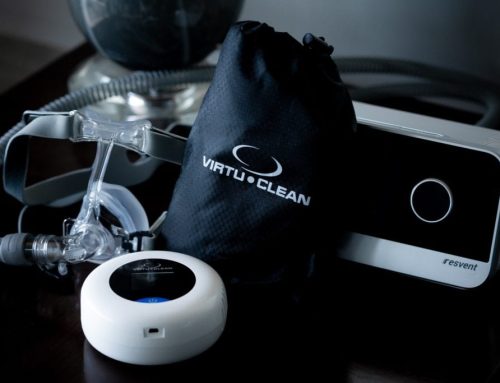There are many factors that contribute to maintaining CPAP compliance, one of the most important ones involves looking after your CPAP equipment. If you are committed to successfully going through with your CPAP therapy, then you need to ensure that you give it a top priority. This means that you will regularly have to maintain and clean your CPAP equipment.

CPAP Mask
Thankfully, taking proper care of your CPAP equipment is not hard work and takes a short time to complete. By making a few adjustments to your routine, you will be able to increase your CPAP’s equipment efficiency to 100% and finally get the much-needed rest you’ve been yearning for.
At BestCPAPCleaner.com we care very much about the progress of our patient’s therapy and are committed to ensuring that they receive as much information as possible regarding how therapy compliance can have a positive impact on their lives.
One of the most frequently asked questions is “how often does CPAP equipment need to be cleaned?”
In order to answer this and other CPAP cleaning and maintenance questions, we have created this comprehensive guide that will offer you all the information you need regarding the right way to maintain and clean your CPAP equipment.
Cleaning and Replacing the CPAP Humidifier
Currently, almost all CPAP machines now come with a humidification system as standard. The humidification system helps reduce morning dry mouth not to mention keeping your nasal turbinates from drying out as well as becoming inflamed and irritated.

To prevent bacteria build-up in the humidification chamber, it needs to be cleaned out on a daily basis. Cleaning your CPAP humidification chamber will also prevent calcification.
Below are the steps to follow when cleaning the humidification chamber:
Carefully extract the chamber from the humidifier so that water does not get into your CPAP machine
Open the chamber and wash it with warm and soapy water
Fill the humidification chamber with sterile or distilled water. You should not use tap water as it might contain chemicals and minerals that will damage components of the machine. We also insist that you use filtered water preferably using a Brita filter to avoid chemical and mineral contamination.
You should soak the humidifier chamber in a white vinegar and water solution at least once a week. The solution should contain 1 part white vinegar and 3 parts. Let the humidifier chamber soak for at least 15 minutes before rinsing it out with distilled water.
There are some humidifiers that can be cleaned in a dishwasher but before putting your humidification chamber in the washing machine, check the manual to ensure that it is dishwasher-safe.
We recommend that you replace humidifier chambers once every six months or whenever you feel a replacement is needed.
Cleaning and Replacing a CPAP Mask
Most of the CPAP mask cushions that are found in the market are made from silicone. Silicone is popular for being gentle and non-irritating. Unfortunately, it does not have a long lifespan and breaks down very quickly. To keep your CPAP mask efficient, it is important that you keep it clean.

Here are some tips on how you can clean and replace your CPAP mask.
- Clean your mask daily with warm water using non-fragrant soap, alternatively, you could buy wipes and detergents specifically meant for CPAP masks
- Rinse the soap, then allow the mask to air dry on a paper towel or on a clean cloth out of direct sunlight.
- Before using your CPAP mask when going to bed, you need to thoroughly wash your face. Do not use facial moisturizers afterward as they are known to accelerate the breakdown of silicone.
- We recommend that you soak your CPAP mask in a vinegar and water solution at least once a week. The solution should contain 1 part white vinegar and 3 parts water. Use distilled water to rinse.
- You shouldn’t neglect cleaning chinstraps and headgear. Use warm and soapy water to clean and ensure they are thoroughly rinsed before air-drying them. You should never put chinstraps or headgear in your dryer or washing machine. Always clean them by hand.
- To understand how frequently you should replace your CPAP masks, go through your manufacturer’s manual as well as your insurance allowance. For most cushions though, it is recommended that you replace them at least once or twice a month while the mask should be replaced every 3 – 6 months.
- CPAP tubing should be cleaned every week in warm and soapy water then left to air dry away from direct sunlight.
As you can see very little maintenance required to keep your CPAP working efficiently. If you want to continue breathing better for a long time to come, all you need is to spare a few minutes every day to clean your CPAP machine and all its components.


 Shop
Shop



